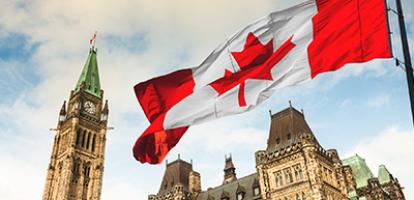Published in the Chronicle Herald on September 27, 2012
By Colin Busby
With MPs back to work after their summer break, one task on their to-do list — found in the 2012 budget — is building a program to give financial support to employers of reservists on military leave. How they implement the plan will be crucial for Canadian employers and the reservists that they hire.
Your local hospital’s surgeon, your psychologist, or your refrigerator repairman may have a secret: He or she may also be a reservist in the Canadian Forces. Reservists are commonly known as citizen soldiers. They are students and professionals who possess operational skills that, when needed, give the Canadian Forces operational advantages on domestic and overseas missions. They normally work jobs in our communities, but may be asked to temporarily volunteer for full-time domestic or international military duties.
Military reservists have become a vital component of the Forces. Without reservists, Canada would not have been able fulfil its military commitment in Afghanistan: Roughly a fifth of all Canadians deployed to Afghanistan were citizen soldiers.
Owing to federal and provincial job-protection legislation, which compels civilian employers to restore a reservist’s job upon return from military duties, reservists’ employers tend to bear a disproportionate share of the costs when their employees are deployed overseas or domestically.
Concern that this legislation would make employers reluctant to hire reservists — and erode the relationships among employers, reservist employees and the military — caused the federal government to announce a financial incentives program for employers of reservists.
But how should the federal government develop such a program?
A good employer-support program would have three basic goals: 1) It should be simple for employers to determine whether they qualify; 2) it should aim to offset a fraction of the civilian employer’s costs from leave; and 3) it should be reasonably inexpensive.
The issue of administrative simplicity must first overcome the myriad different provincial job-protection laws for reservists. One solution is to set national qualification criteria that roughly correspond to the minimum requirements of the least stringent provincial or federal legislation. Using this approach, a reservist anywhere in Canada would need, say, one month of civilian employment in order for an employer to receive benefits while agreeing to protect a reservist’s job.
Setting up a plan to offset some costs of civilian employers, at a reasonable price, would benefit from a long look at similar support programs in Australia and the United Kingdom.
Australia provides financial supports to employers without considering the unique financial burden on employers from a reservist’s absence. The government pays employers of reservists the same amount — around $1,200 per week — while reservists are on leave. This universal payment, though administratively simple, is untargeted; hence, Australia’s employer support program tends to be expensive.
In contrast, the U.K. has a targeted program that tries to delineate the financial burden of each employer. This program uses the documented overtime pay, rehiring and retraining costs, as submitted by employers, to compensate for the loss. This creates an administrative burden on employers, and results in a stream of payments that come well after costs have been incurred, ignoring the financial constraints of many small employers. So while the U.K.’s employer support plan is less expensive than that in Australia, the plan takes away from the program’s goodwill objectives.
A made-in-Canada compensation plan should take the positives from these examples. Benefits could be based on compensation levels obtained from past employer payroll data. The implication is that a reservist’s civilian wage reflects his or her specialized skills and, hence, disruption costs on employers.
Benefits could also vary by the size of the company: U.S. evidence on reservists shows that smaller firms are generally less able to absorb employee losses. Compensation could fluctuate from a low of 40 per cent (for large firms) to a maximum of 80 per cent (for small firms) of a reservist’s annual salary, with a ceiling.
A 2011 Senate report on the Canadian Reserves emphasizes that the Canadian Forces cannot function without a strong pool of reservists. Reservists contribute to the skills base of the overall labour force and protect Canada by contributing to peace and international security. Financial incentives to employers are a natural step for the military to maintain a close relationship with the civilian employers of reservists.
In setting up this program, the government of Canada can learn from the successes and mistakes made in similar programs abroad, ensuring an equitable distribution of national defence costs that benefit all Canadians, and at a fair price.
Colin Busby is a Senior Policy Analyst at the C.D. Howe Institute in Toronto. His research, Supporting Employees Who Deploy: The Case for Financial Assistance to Employers of Military Reservists, can be found at www.cdhowe.org.




